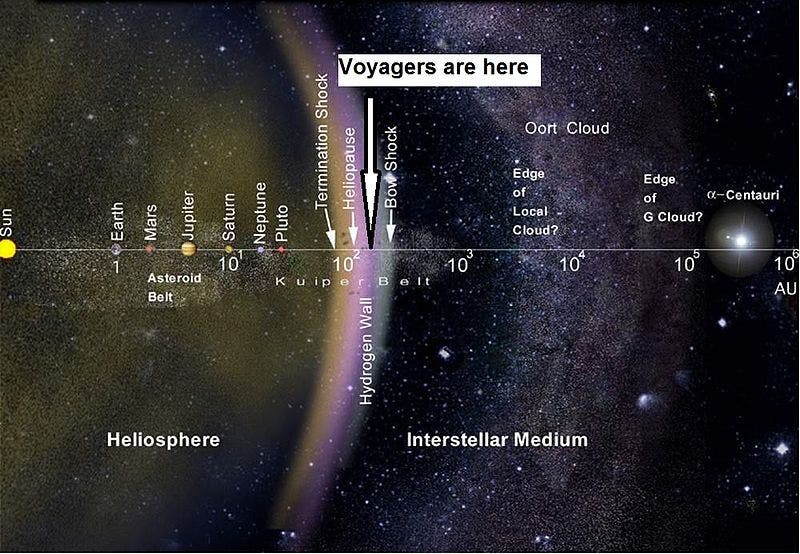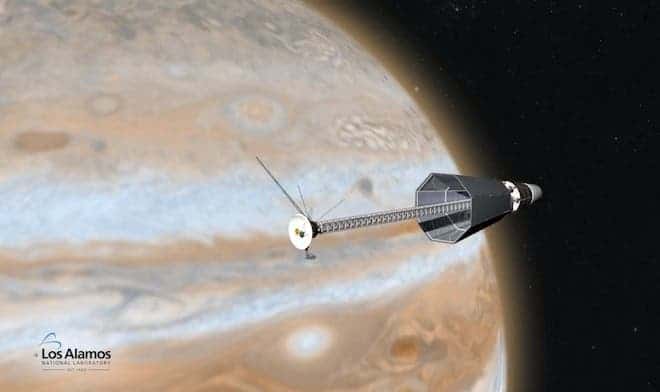
The Voyager probes have provided scientists with invaluable data for the past four decades as they circled our solar system’s outmost planets, and most importantly as they prepare to leave our solar system. Though expected to exit the solar system by the end of this year, Voyager-1 has yet to achieve this. The reason for this, scientists say, is that the probe has reached a new boundary between interstellar space and the heliosphere that hadn’t been predicted.
As Voyager-1 nears the heliopause – the region of space where the sun’s influence can no longer be felt and interstellar space starts – readings should have recorded fewer particles of solar wind and more cosmic rays pouring in from interstellar space. And indeed this is how events actually flowed, as in late July, Voyager 1 detected a sudden drop in the presence of particles from the solar wind, which went down by half. At the same time, the first low-energy cosmic rays filtered in.
Things were a bit hectic, with solar wind particle levels rising and dropping for a while in spikes, however a clear trend of solar influence dwindling could be determined. From late July until today, the intensity of the solar wind particles had decreased a thousand-fold, while cosmic ray intensities rose.
Nature doesn’t act as expected
If everything went as predicted, where’s surprising new boundary then? Well, were scientists to look solely at charged particles reading, they would have determined that Voyager-1 had cleared the solar system and entered interstellar medium.
The sun creates a solar magnetic field wrapping the solar system like a bubble. As Voyager-1 headed for the heliopause scientists predicted that the magnetic field would first shift directions, then be left behind and the interstellar one would be detected.
Voyager’s instruments have yet to detect any anticipated change in field direction, according to Leonard Burlaga, a member of the team that operates Voyager’s magnetometer from NASA’s Goddard Space Flight Center in Greenbelt, Md.
“As ever, Voyager seems to have a remarkable capacity for providing observations that suggest … we’re almost right,” said Gary Zank, a space physicist at the University of Alabama-Huntsville. “It would be nice for the theory and the observations to agree all at once. But it may not ever happen that way.”
Now, scientists conclude that the probe has reached a new interstellar boundary that nobody had predicted. It is in this area that the solar system’s magnetic field links with that of interstellar space, a bridge which scientists now call a “highway” that allows particles from both mediums to travel along.
No model had predicted this new boundary in the heliosheath, so now astronomers can’t tell for sure when Voyager-1, which is 11 billion miles from the sun and is currently the most distant man-made object in space, will exit the solar system. Voyager-2 is trailing behind, some 2 billion miles away from Voyager-1, and hasn’t reached this region yet.
Both probes are powered by a nuclear core fueled by radioactive plutonium-238, will begin powering down in 2020 and are expected to stop operating in 2025. Still, scientists are confident that both probes should well exit the solar system by then.
The results were announced during a press conference at the recent American Geophysical Union meeting.






